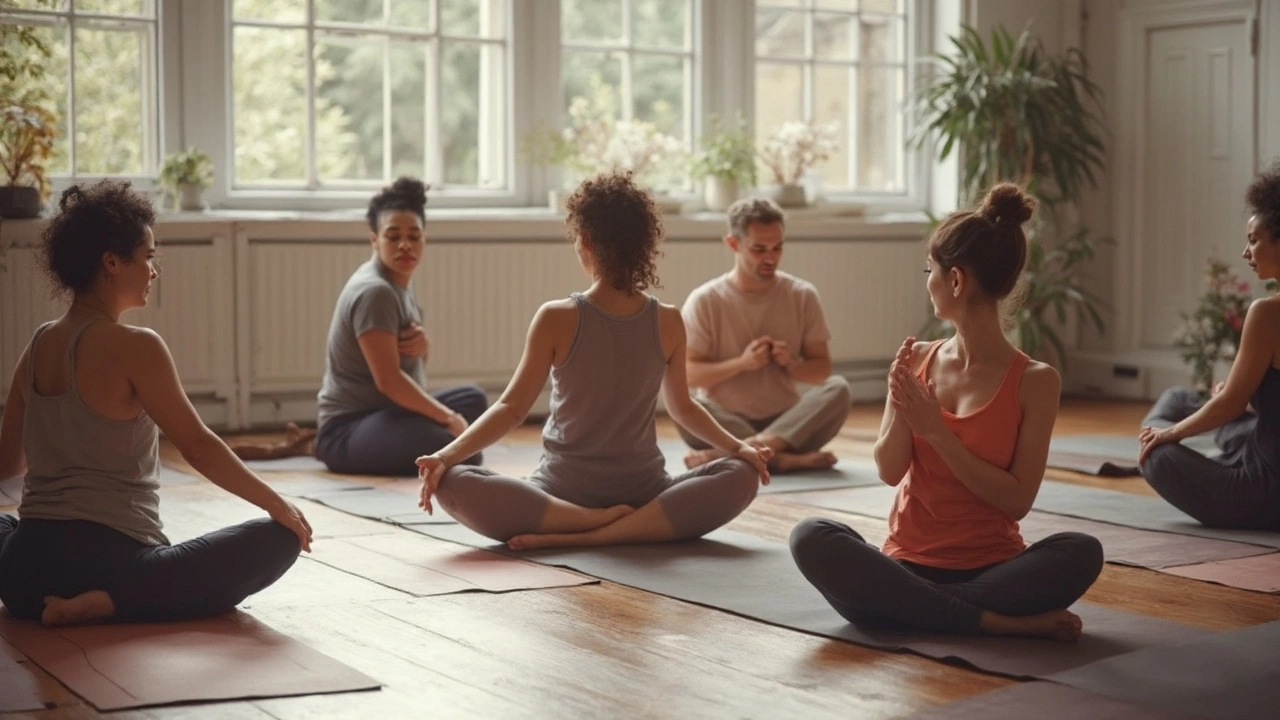Movement Therapy: Practical Ways to Reduce Pain & Improve Mobility
You might think movement therapy is only for athletes or rehab patients. It's not. Small, consistent movement choices often beat one-off treatments. This page lays out clear, no-fluff ways to use movement to feel better each day.
Movement therapy covers practices that change how your body moves and feels: fascia stretching, myofascial release, percussion tools, chair massage, Rolfing, acu-yoga, and gentle flow work like Lomi Lomi or Breema. Each method targets tight spots, improves range of motion, or calms the nervous system. The trick is matching the right method to the problem.
Quick at-home moves you can start today
1) Short fascia stretch: Stand with feet hip-width. Reach both arms up, then bend forward slowly from the hips. Hold light tension for 30 seconds, breathe, then roll up. Repeat twice. This eases general tightness.
2) Self myofascial release with a ball: Sit on a firm chair and place a tennis ball under your glute where you feel tight. Lean into the ball and move slowly for 60–90 seconds. Stop if sharp pain starts. This finds stubborn knots fast.
3) Percussion gadget basics: Use a low setting and glide the device over big muscles for 30–60 seconds. Don’t press hard on bones, joints, or inflamed spots. Great for post-workout soreness and muscle warm-up.
4) Chair massage break: Set a 5-minute timer at work. Roll shoulders, shrug, and take three full diaphragmatic breaths. Even tiny rituals reset your posture and reduce tension buildup.
5) Acu-Yoga mini flow: Add two standing acupressure points—press the web space between thumb and index finger for 20 seconds, then press the hollow behind the knee for 20 seconds. Follow with gentle neck rolls. Simple combos like this calm pain pathways fast.
When to see a pro and how to pick one
Choose a pro when pain limits daily tasks, lasts more than a few weeks, or gets worse. For fascia and deep tissue work, look for practitioners trained in myofascial release, Rolfing, or certified massage therapists who list those skills. If you want gentle body-mind work, search for Breema, Lomi Lomi, or reiki-trained therapists.
Ask before you book: What’s your approach for my issue? How many sessions do you expect? Do you modify for injuries? Good therapists give clear answers, show experience, and explain risks. A first session should include assessment, a gentle start, and a plan for follow-ups.
Want a simple plan to begin? Pick one small routine above and do it three times this week. Notice changes in sleep, stiffness, or daily movement. If something improves, keep it. If pain stays or intensifies, get professional advice. Movement therapy is practical—start small, track what helps, and build from there.
Discover how Feldenkrais training reshapes the way you move, improves flexibility, boosts posture, and sharpens body awareness for real-world benefits.


 Health and Wellness
Health and Wellness